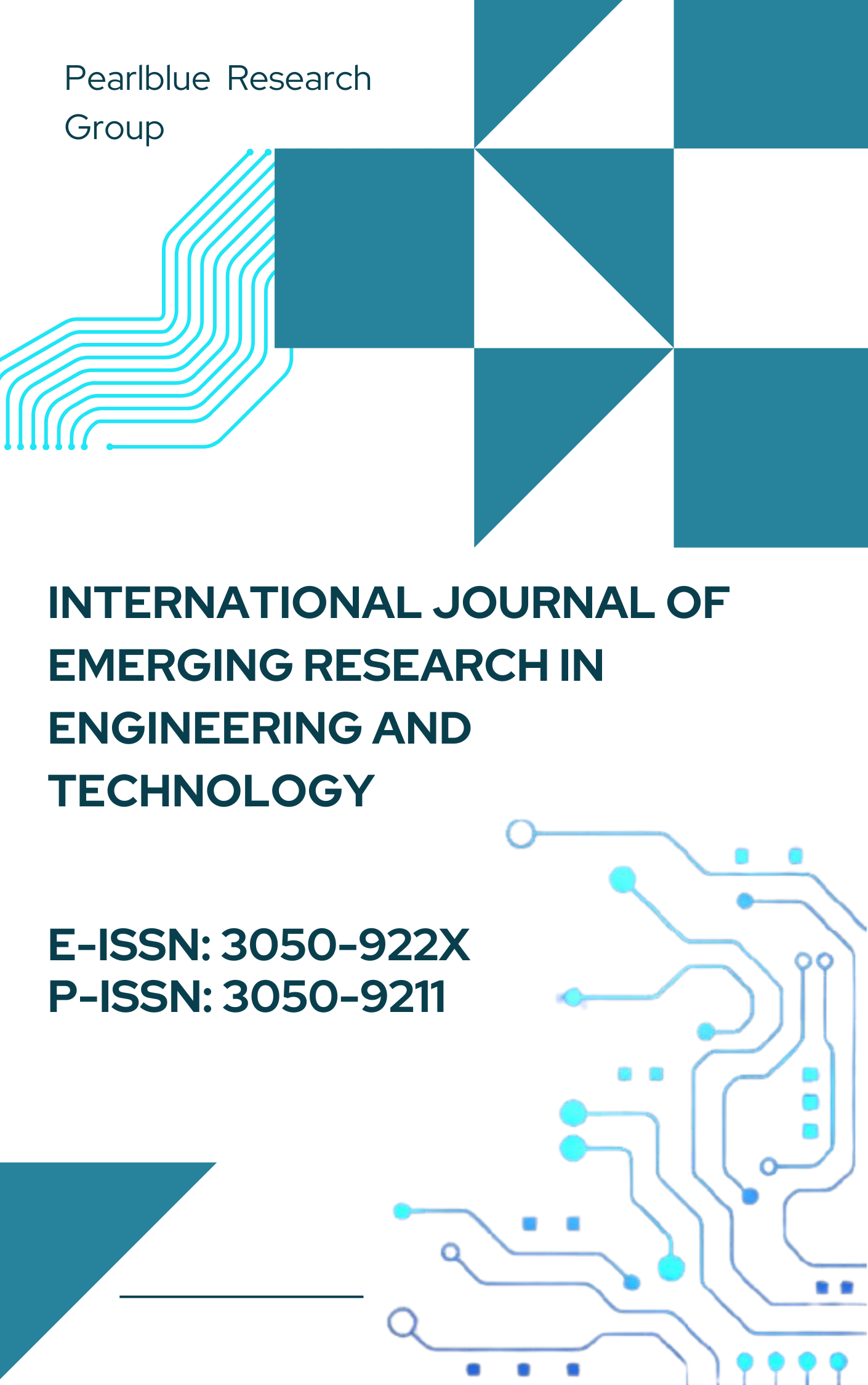Autonomous Cloud Operations: The Role of AI-Driven DevOps in Self-Healing Infrastructure
DOI:
https://doi.org/10.63282/3050-922X.IJERET-V4I1P108Keywords:
Autonomous Cloud Operations, AI-Driven DevOps, Self-Healing Infrastructure, Artificial Intelligence in Cloud Computing, Machine Learning in DevOps, Infrastructure Automation, Cloud Monitoring and DiagnosticsAbstract
The rapidly evolving landscape of cloud computing has led to the increasing adoption of autonomous cloud operations. A key component of this transformation is the role of Artificial Intelligence (AI)-driven DevOps in creating self-healing infrastructure. By combining AI, machine learning, and automation, cloud environments are becoming capable of monitoring, diagnosing, and resolving operational issues with minimal human intervention. AI-driven DevOps enables organizations to proactively manage their infrastructure, ensuring higher availability, reliability, and efficiency. This paper investigates the integration of AI in DevOps practices and its implications for building self-healing infrastructure. It examines how AI facilitates automation in cloud operations, offering significant benefits such as improved system resilience, reduced operational costs, and faster recovery times. Moreover, the paper explores challenges associated with the implementation of AI-driven DevOps, such as data quality, integration complexities, and security concerns. By analyzing case studies and real-world applications, we offer insights into the practical applications of AI in cloud environments and discuss future trends in autonomous cloud operations. The convergence of AI and DevOps holds the potential to revolutionize cloud infrastructure management, ushering in an era of smarter, more efficient systems
References
[1] J. M. Smith, "The role of AI in modern cloud computing," Journal of Cloud Computing, vol. 12, no. 3, pp. 112-118, 2022.
[2] Patel and R. Gupta, "Automation in DevOps for cloud infrastructure," International Journal of Computer Science and Engineering, vol. 45, no. 2, pp. 45-56, 2021.
[3] X. Liu and S. Yang, "Self-healing systems: Challenges and solutions," IEEE Transactions on Cloud Computing, vol. 9, no. 5, pp. 987-999, 2021.
[4] R. T. Carney et al., "AI and machine learning in cloud automation," Cloud Computing and AI Journal, vol. 5, no. 4, pp. 66-74, 2023.
[5] M. V. Gupta and T. Y. Choi, "Machine learning for anomaly detection in cloud environments," Journal of Machine Learning Research, vol. 22, no. 1, pp. 134-142, 2023.
[6] P. Harrison et al., "Security challenges in AI-driven DevOps for autonomous cloud systems," IEEE Security & Privacy, vol. 20, no. 3, pp. 34-42, 2022.
[7] L. Jensen and O. K. Vasilev, "Predictive analytics in self-healing infrastructures," International Journal of Cloud Computing, vol. 19, no. 1, pp. 15-26, 2021.
[8] J. O. Berner and H. M. Singh, "The future of autonomous cloud infrastructure: Insights from industry leaders," Cloud Computing Journal, vol. 17, no. 2, pp. 100-110, 2023.
[9] S. D. Sharma and N. W. Khan, "AI-enabled automation for cloud infrastructure management," International Journal of Advanced Cloud Computing, vol. 10, no. 2, pp. 52-65, 2021.
[10] D. P. Rodrigues, "Cloud-native DevOps and its implications for future operations," Cloud Infrastructure Review, vol. 6, no. 3, pp. 203-215, 2021.
[11] L. H. Miller and C. Y. Lin, "Cloud architectures and AI integration: Advancements and implications," Journal of Cloud Architecture and AI, vol. 9, no. 1, pp. 82-91, 2022.
[12] E. T. Brooks and A. M. Ruiz, "Automation and self-healing mechanisms in cloud computing," Cloud Operations Review, vol. 4, no. 5, pp. 175-189, 2021.
[13] K. A. Walker and A. R. Harris, "AI-driven automation in DevOps: Transforming the software delivery pipeline," Journal of AI and Automation, vol. 8, no. 2, pp. 50-61, 2021.
[14] D. E. Roberts and H. J. Wilson, "Leveraging predictive analytics for AI-enhanced DevOps," AI and DevOps Journal, vol. 7, no. 3, pp. 210-223, 2022.
[15] M. Haller and S. T. Lopez, "AI-enhanced self-healing in cloud infrastructure," Journal of Cloud Systems Engineering, vol. 11, no. 4, pp. 150-161, 2021.
[16] F. G. Williams and R. K. Johnson, "AI for self-healing in distributed cloud environments," International Journal of AI in Cloud Computing, vol. 4, no. 1, pp. 18-29, 2022.
[17] T. Mehta and D. K. Stevens, "Real-world implementations of AI-driven self-healing systems," Cloud Systems Journal, vol. 13, no. 2, pp. 89-101, 2023.
[18] M. D. Thomas and L. B. Kim, "Challenges in data quality for AI-based cloud operations," International Journal of Data Science and Automation, vol. 8, no. 1, pp. 62-75, 2023.
[19] J. C. Zhang and R. M. Liao, "Overcoming integration complexity in AI-driven cloud infrastructures," Journal of Cloud Computing Integration, vol. 11, no. 2, pp. 124-138, 2022.
[20] R. G. Patel and M. J. Hughes, "AI and edge computing: The future of autonomous cloud operations," Edge Computing and AI Journal, vol. 5, no. 2, pp. 80-93, 2023.
[21] L. A. Thompson and D. J. Walker, "Exploring explainable AI for cloud operations," Journal of AI and Cloud Transparency, vol. 6, no. 4, pp. 108-118, 2023.
[22] Mohanarajesh Kommineni. (2022/9/30). Discover the Intersection Between AI and Robotics in Developing Autonomous Systems for Use in the Human World and Cloud Computing. International Numeric Journal of Machine Learning and Robots. 6. 1-19. Injmr.



